
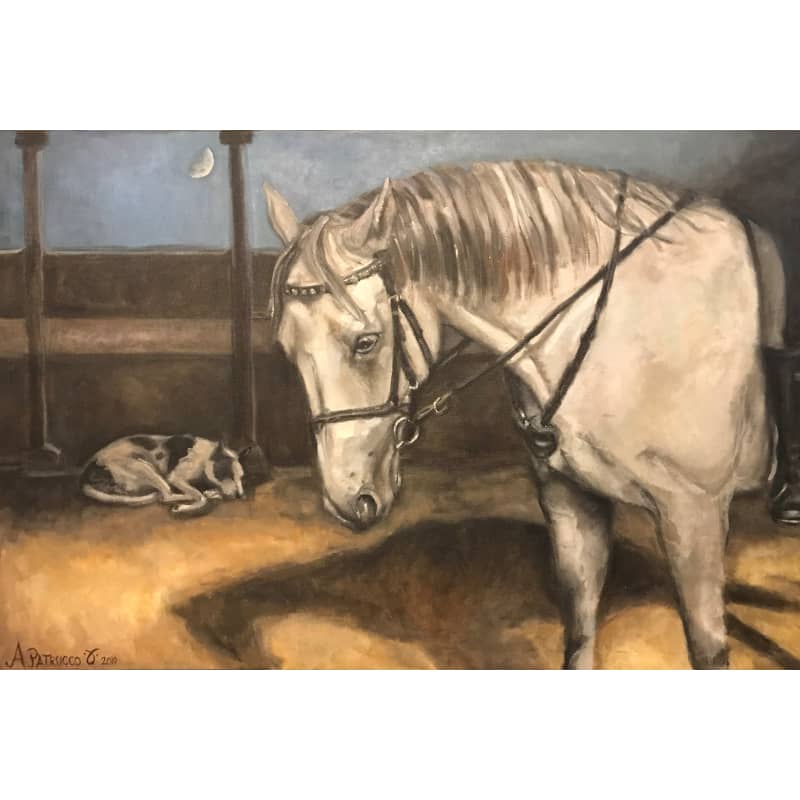
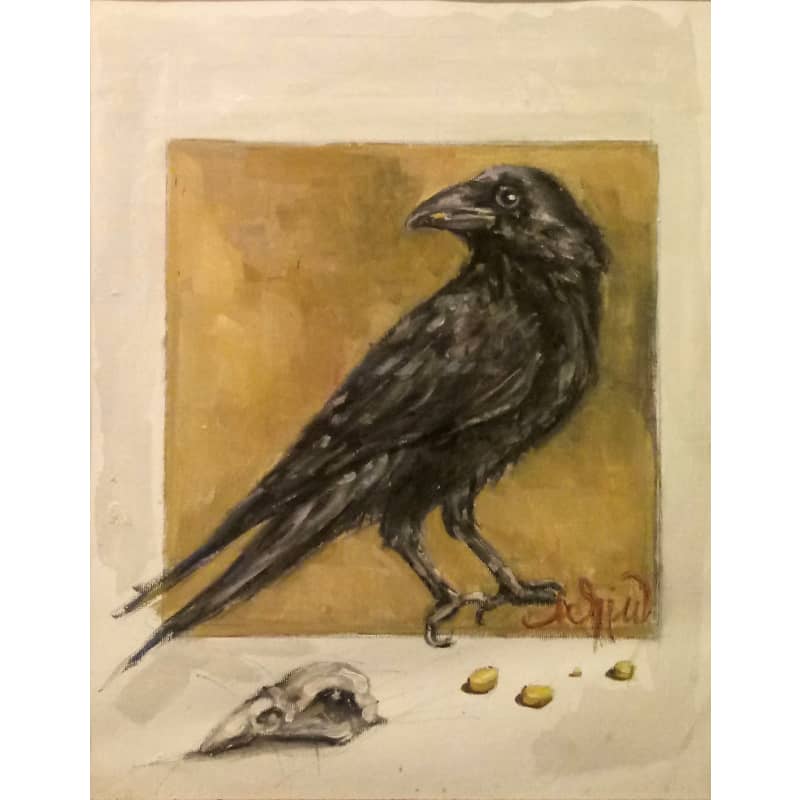
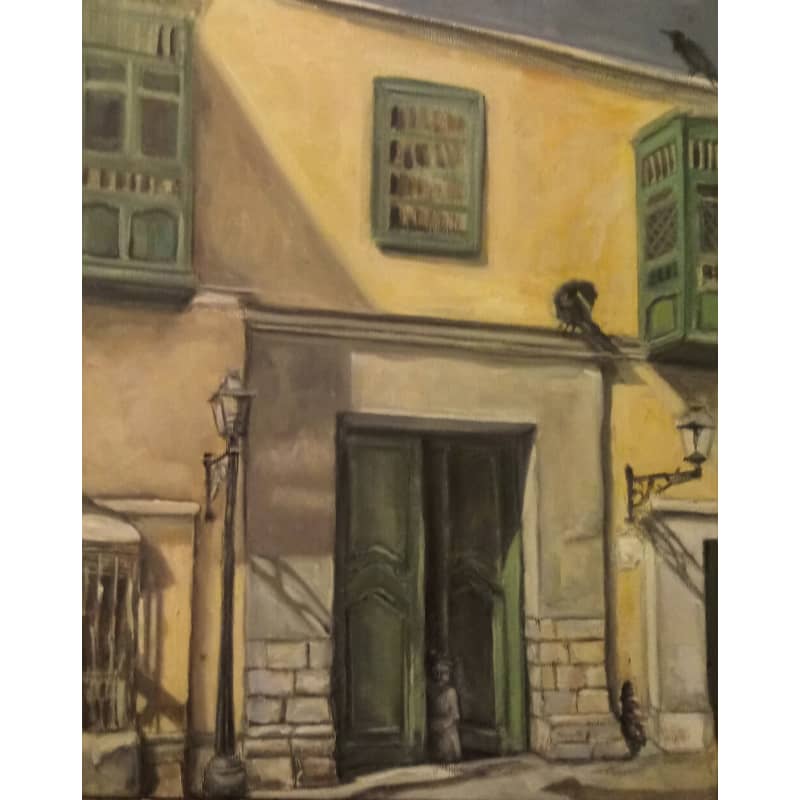
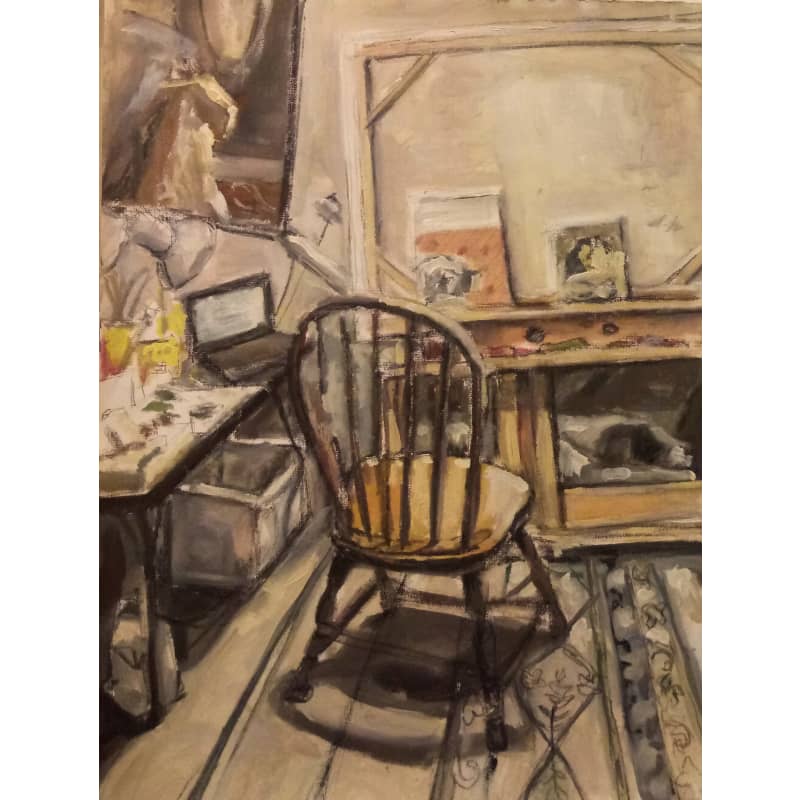
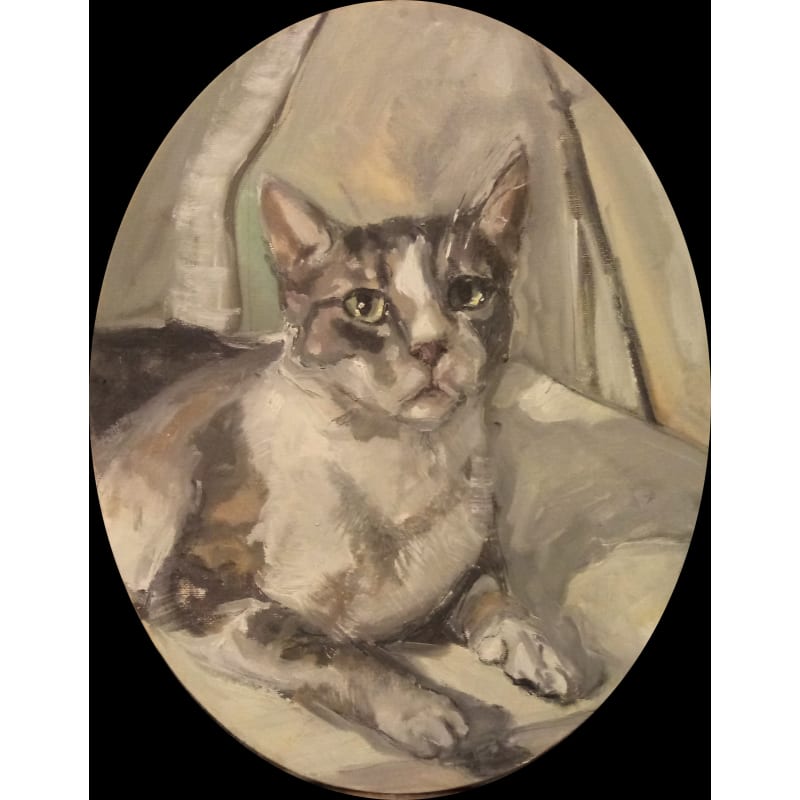
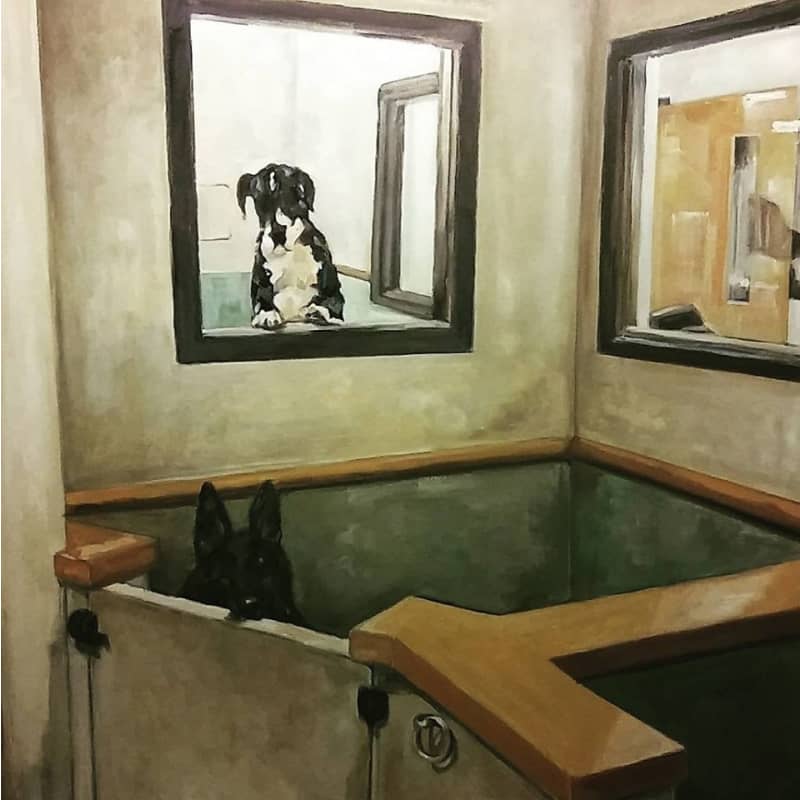
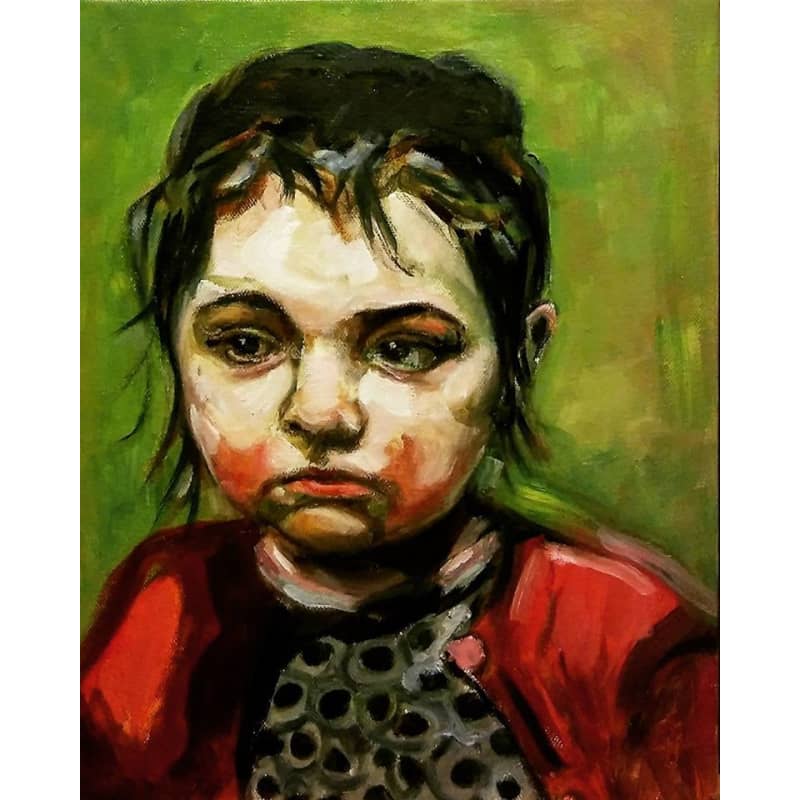

Gallery Reserve
For Viewing Only
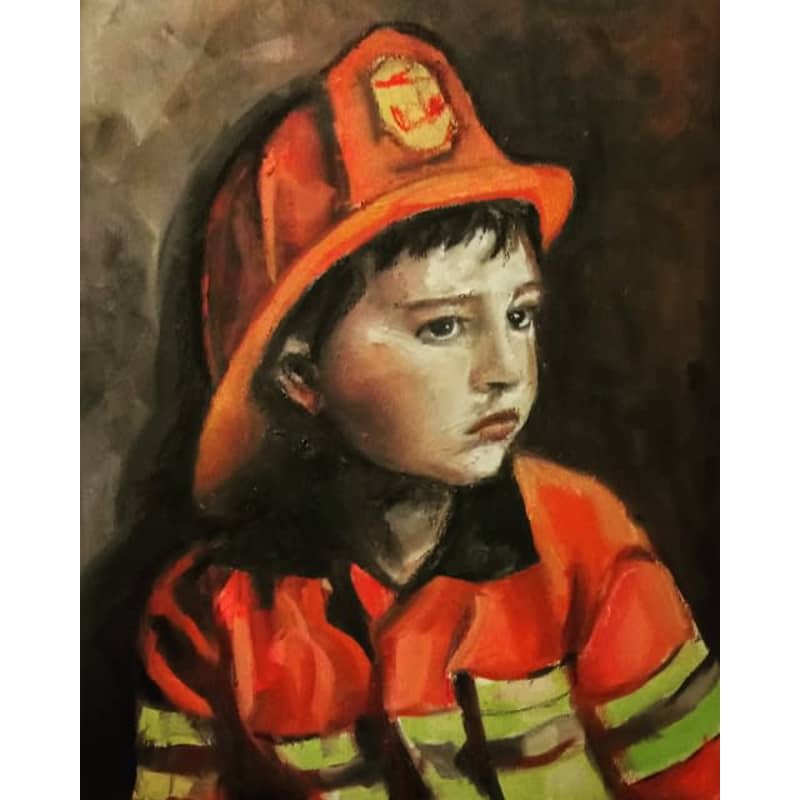
About Adriana Patrucco
Represented Artist
Adriana Patrucco was born and raised in Perú. She is strongly influenced by the Peruvian indigenist painting from the first four decades of the 20th century, in particular, by the work of José Sabogal and Carlota Carvallo. Petrucco’s attraction to these artists is reflected in the innovative use of exaggerated features of her portraits and the use of particular colors reminiscent of those used in Andean folklore. Other crucial influences on her art are John Singer Sargent, Edward Hopper, Gustave Caillebotte, Tamara de Lempicka, and Paul Cézanne, from whom she learns the synthesis of light and the aesthetics of gestural elements in figurative painting. During her time at the School of Art in Lima, Perú, she also developed a strong career in children’s illustration. She paints at her home in Fayetteville, Arkansas.
As an artist, I am seduced by the role of light and shadows on what I paint. For me, they are the main characters of my painting and also its main expressive device. Therefore, I think the most relevant feature of a painting is not necessarily the formal resemblance to the actual subject, but the expression, the light, and even the breathing the painter attempts to convey.
My latest series is inspired by images of lost and found dogs seeking new homes, an uncommon yet familiar sight most average people are not accustomed to. My objective, as an artist, is to compliment these unfortunate circumstances of rejection and turn them into more desirable and hopeful experiences using soft brush strokes and a hint of color, emphasizing even the smallest wrinkle to describe its melancholy. The dogs have physically exhausted themselves, to the point where they are solely relying on eye-to-eye contact in order to successfully communicate in desperation.
About the art
Adriana Patrucco was born and raised in Perú. She is strongly influenced by the Peruvian indigenist painting from the first four decades of the 20th century, in particular, by the work of José Sabogal and Carlota Carvallo. Petrucco’s attraction to these artists is reflected in the innovative use of exaggerated features of her portraits and the use of particular colors reminiscent of those used in Andean folklore. Other crucial influences on her art are John Singer Sargent, Edward Hopper, Gustave Caillebotte, Tamara de Lempicka, and Paul Cézanne, from whom she learns the synthesis of light and the aesthetics of gestural elements in figurative painting. During her time at the School of Art in Lima, Perú, she also developed a strong career in children’s illustration. She paints at her home in Fayetteville, Arkansas.
As an artist, I am seduced by the role of light and shadows on what I paint. For me, they are the main characters of my painting and also its main expressive device. Therefore, I think the most relevant feature of a painting is not necessarily the formal resemblance to the actual subject, but the expression, the light, and even the breathing the painter attempts to convey.
My latest series is inspired by images of lost and found dogs seeking new homes, an uncommon yet familiar sight most average people are not accustomed to. My objective, as an artist, is to compliment these unfortunate circumstances of rejection and turn them into more desirable and hopeful experiences using soft brush strokes and a hint of color, emphasizing even the smallest wrinkle to describe its melancholy. The dogs have physically exhausted themselves, to the point where they are solely relying on eye-to-eye contact in order to successfully communicate in desperation.
